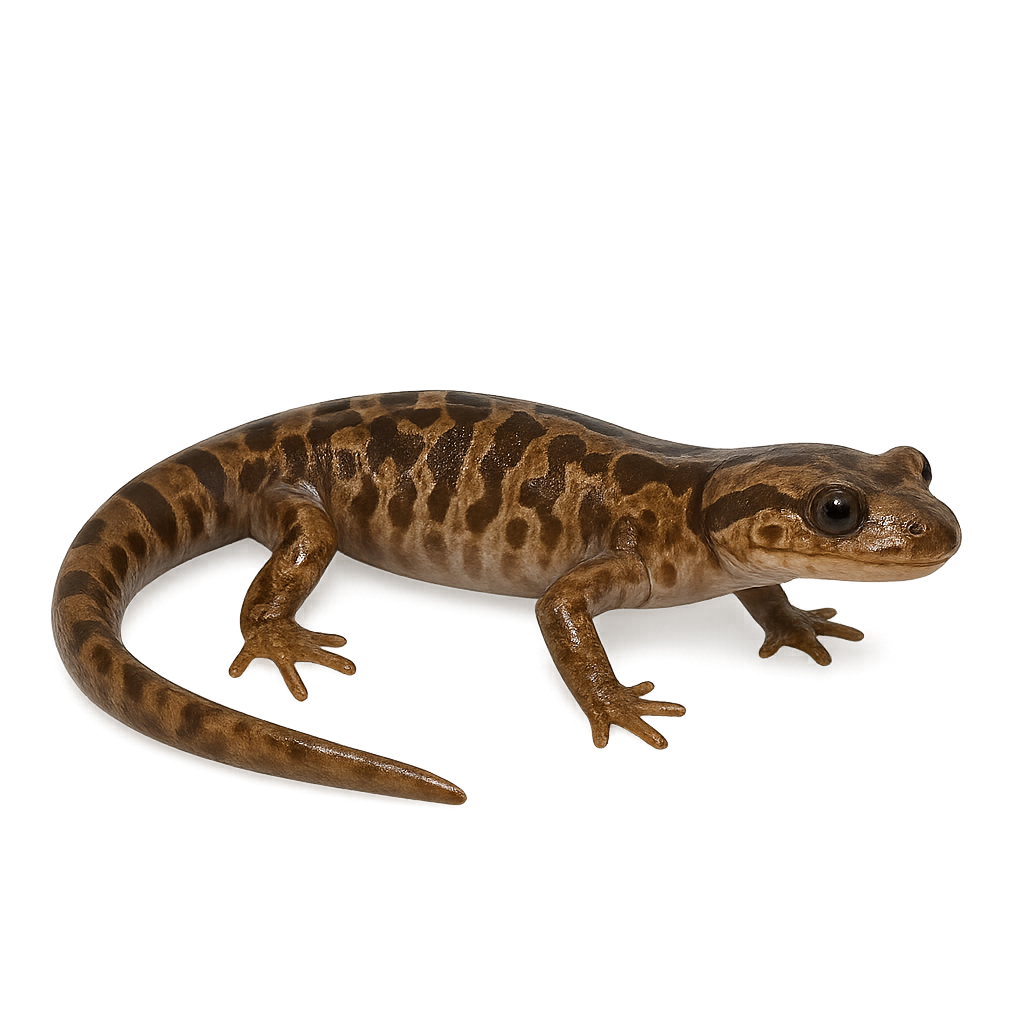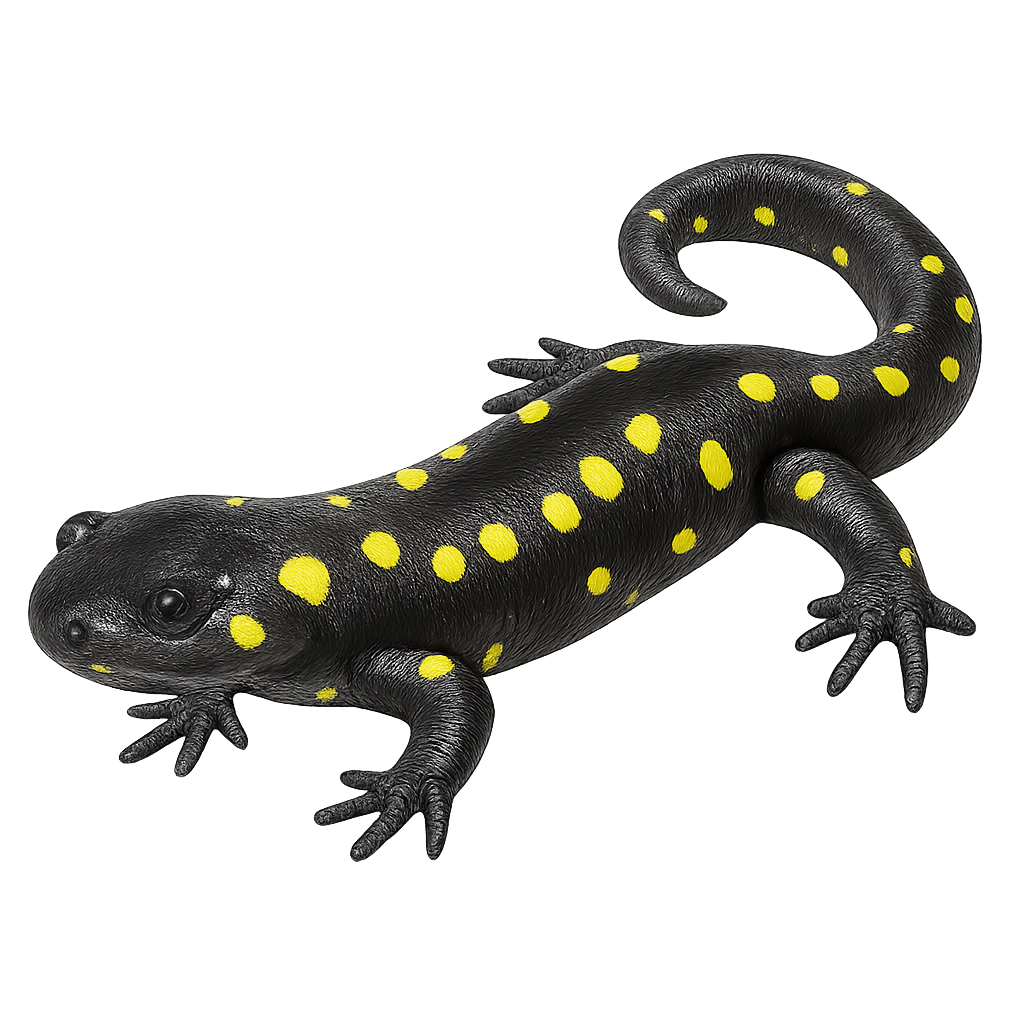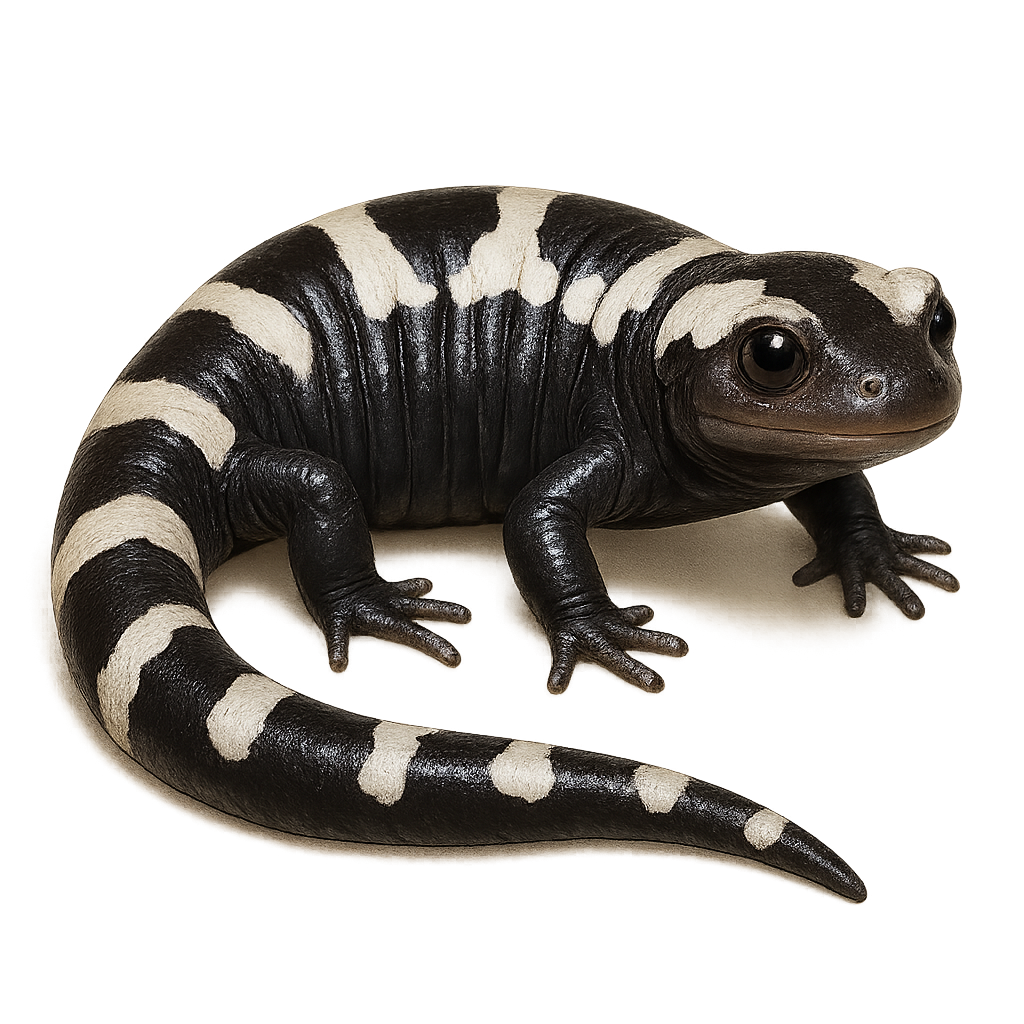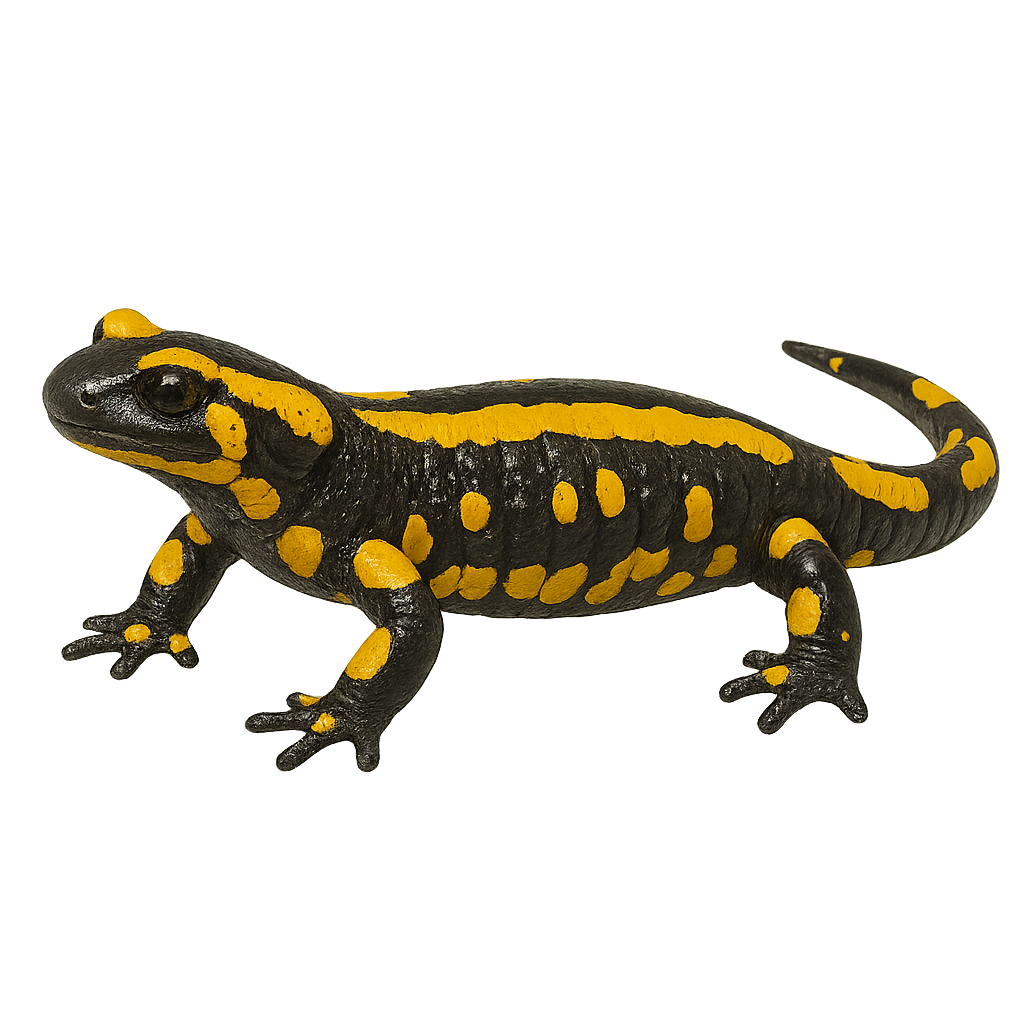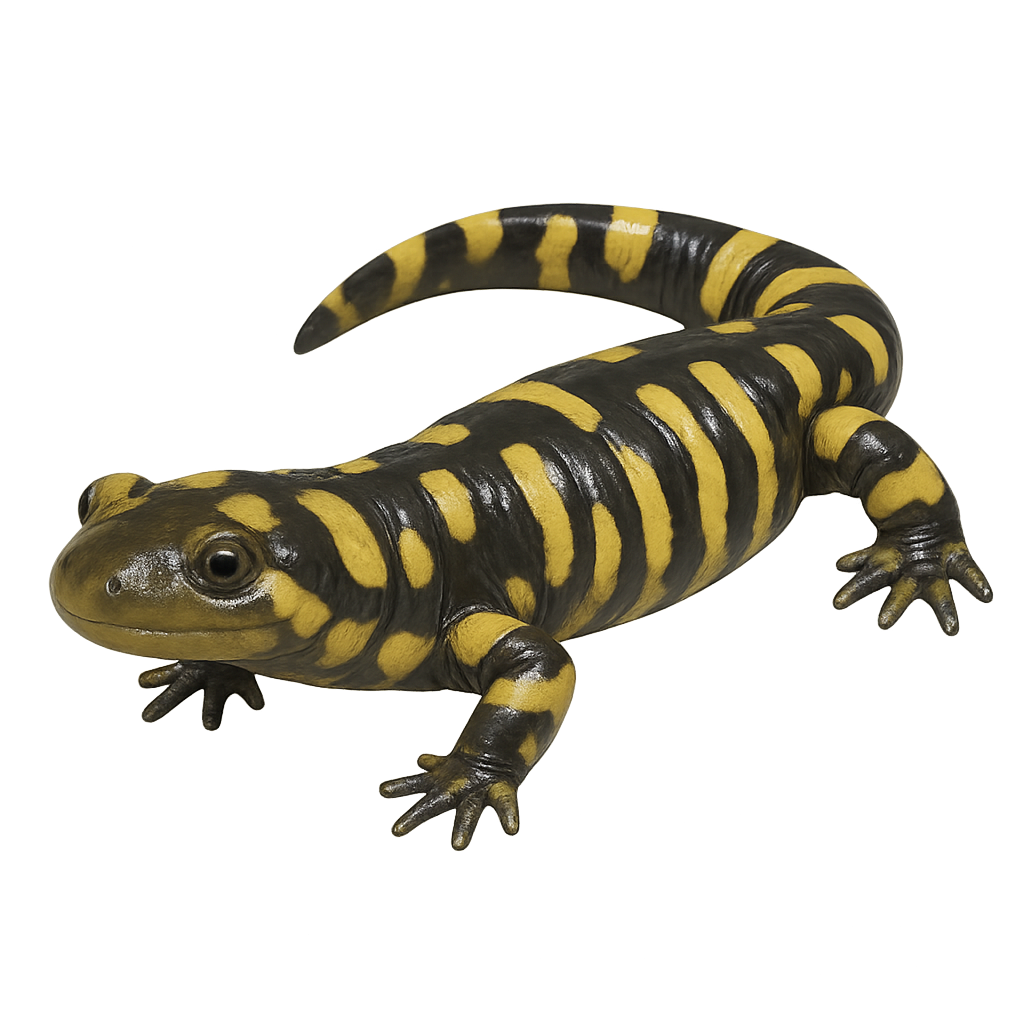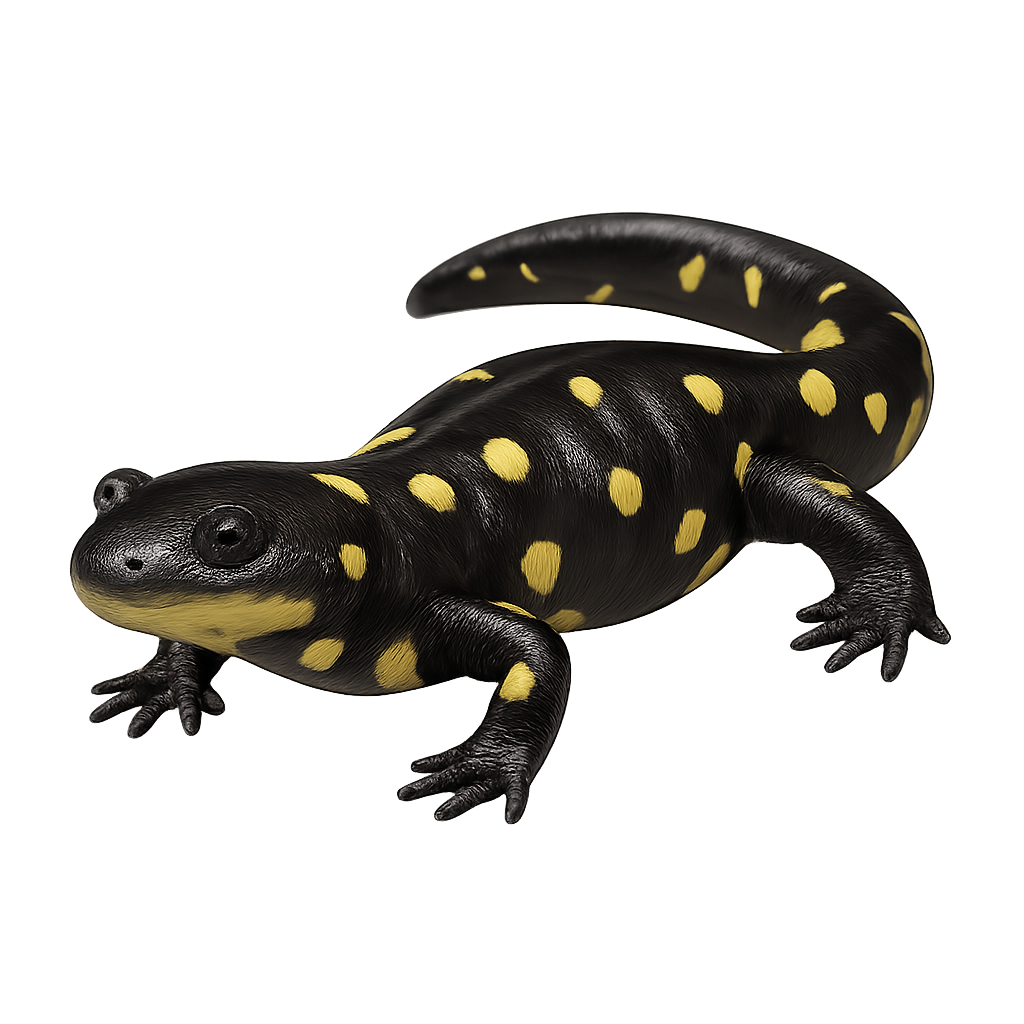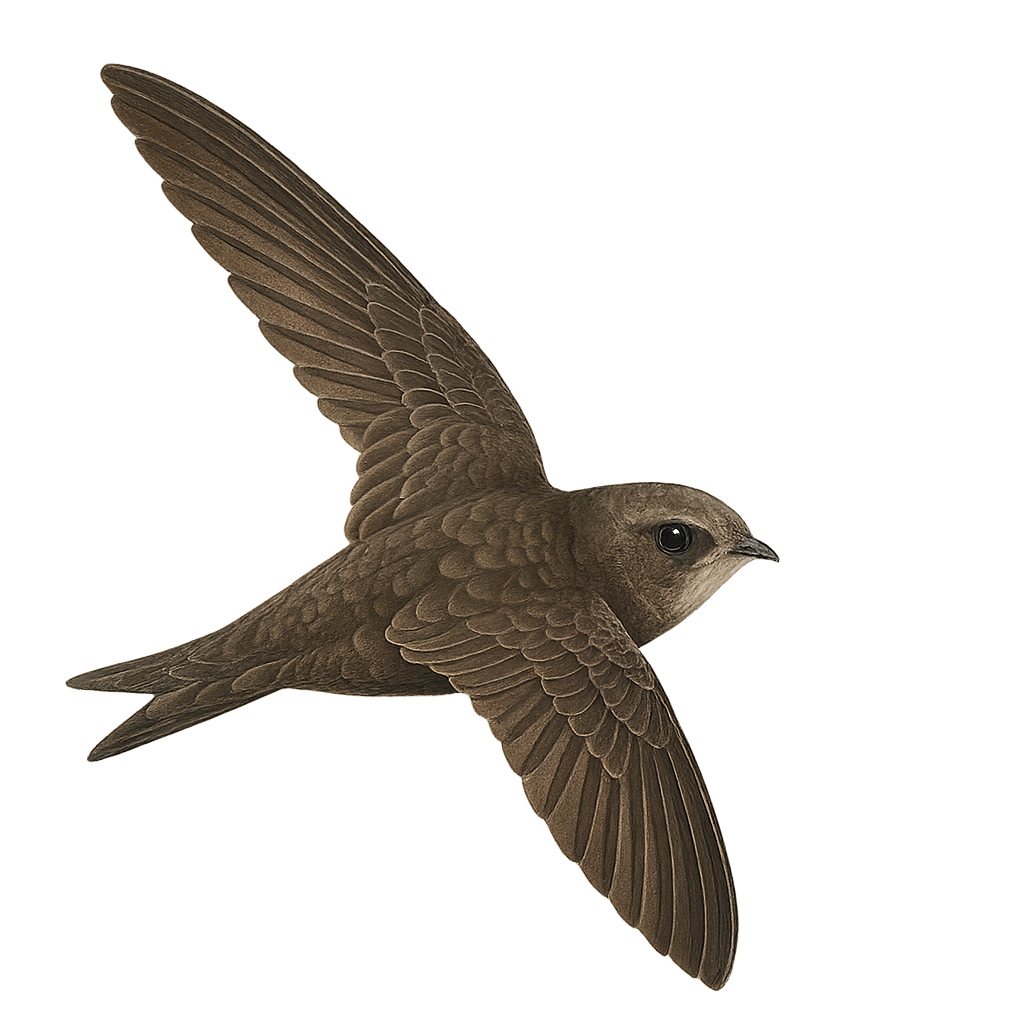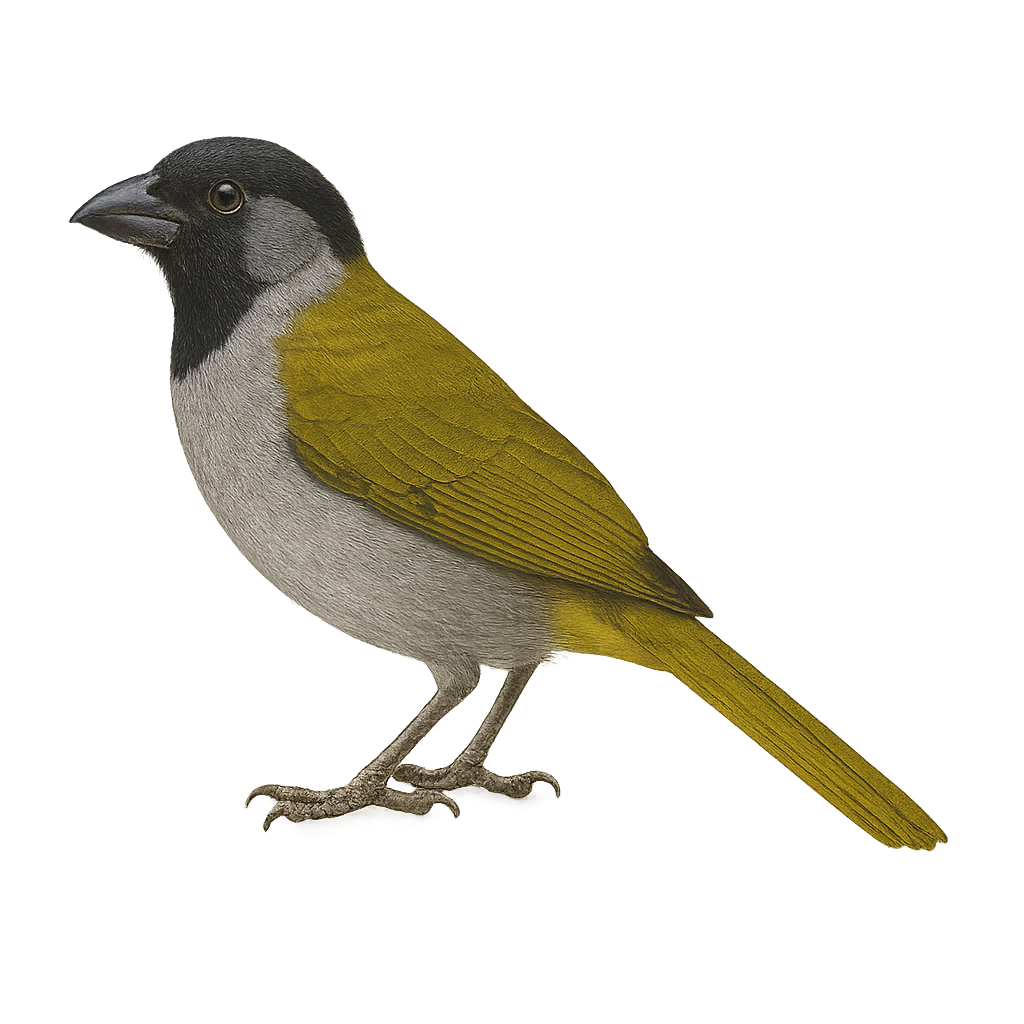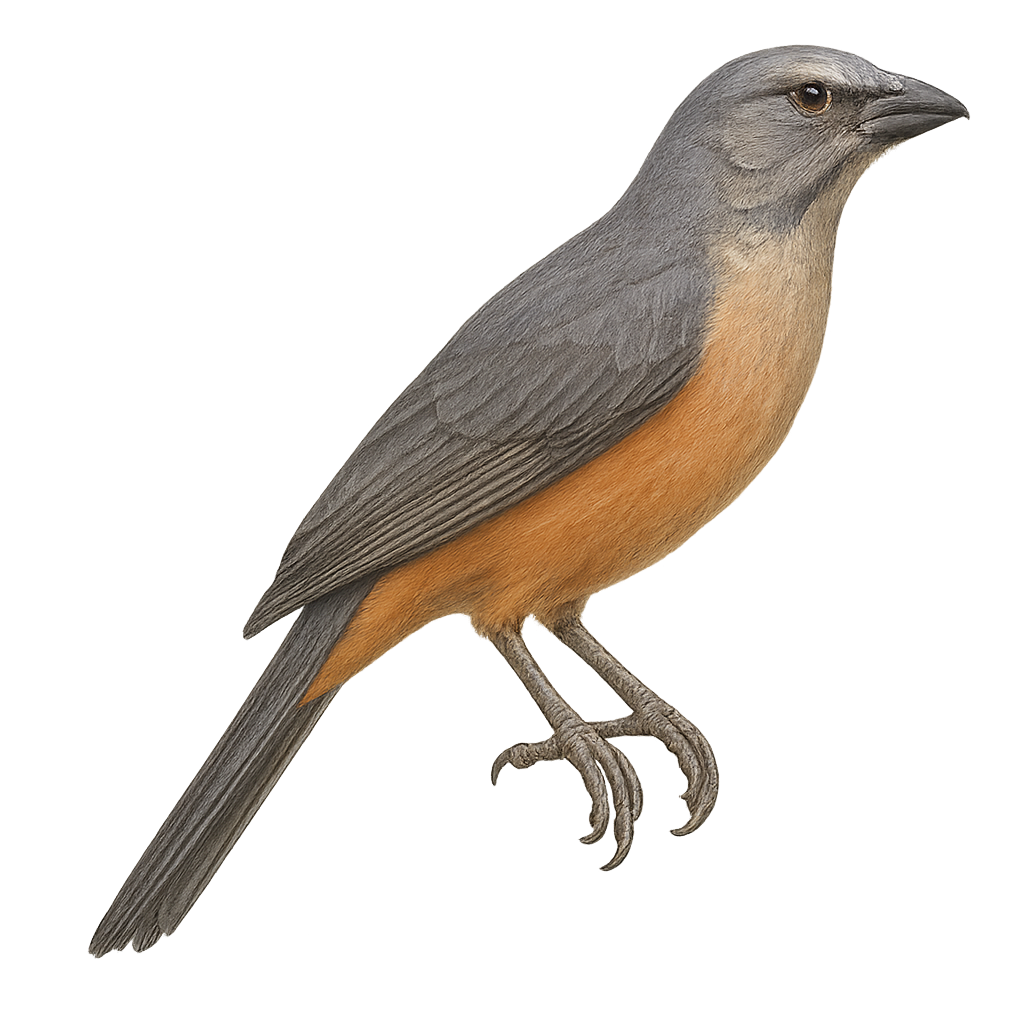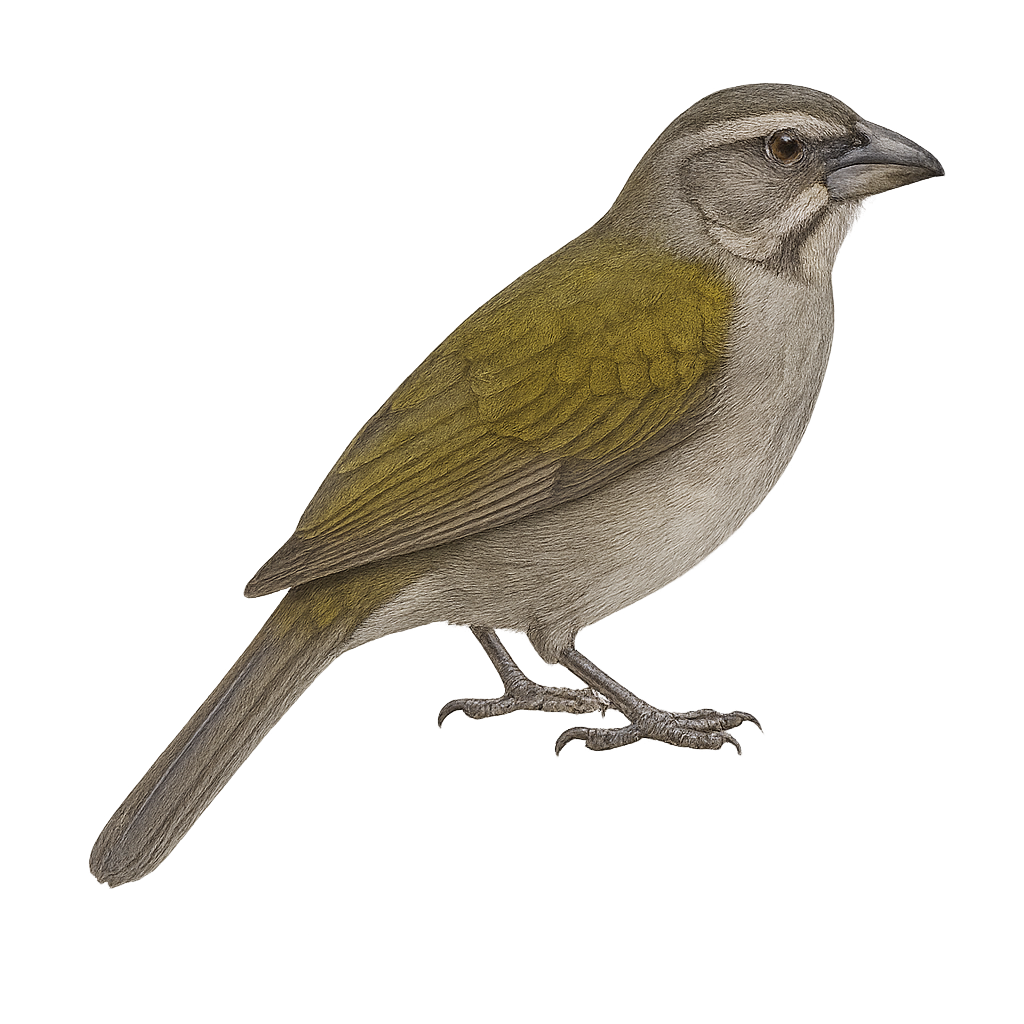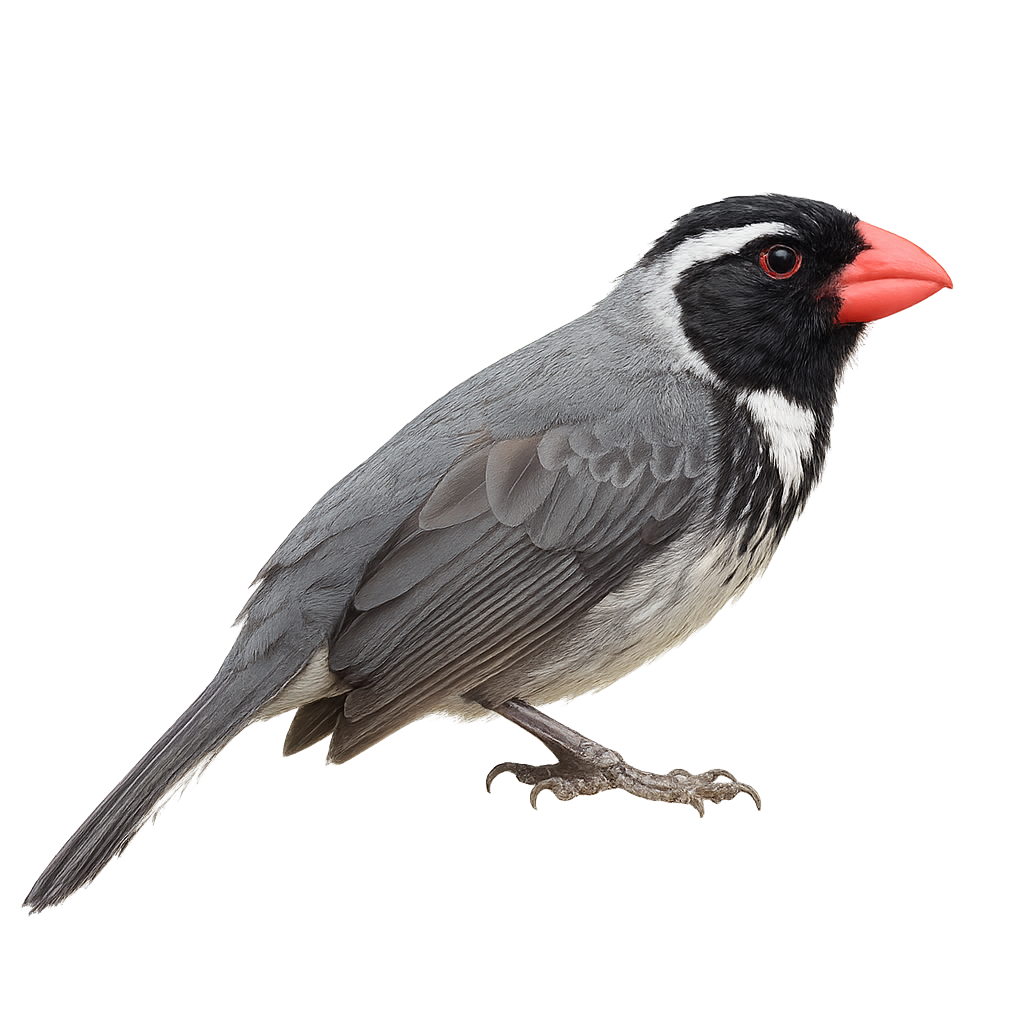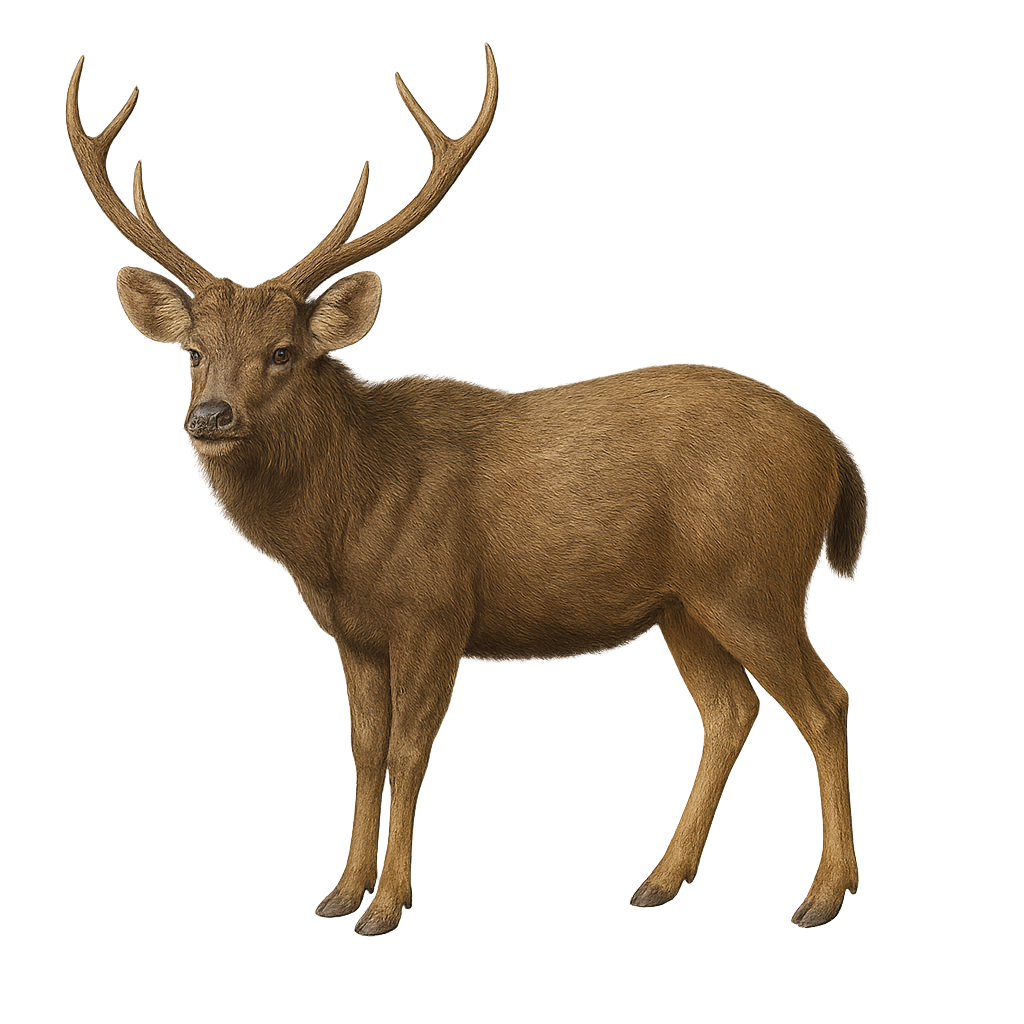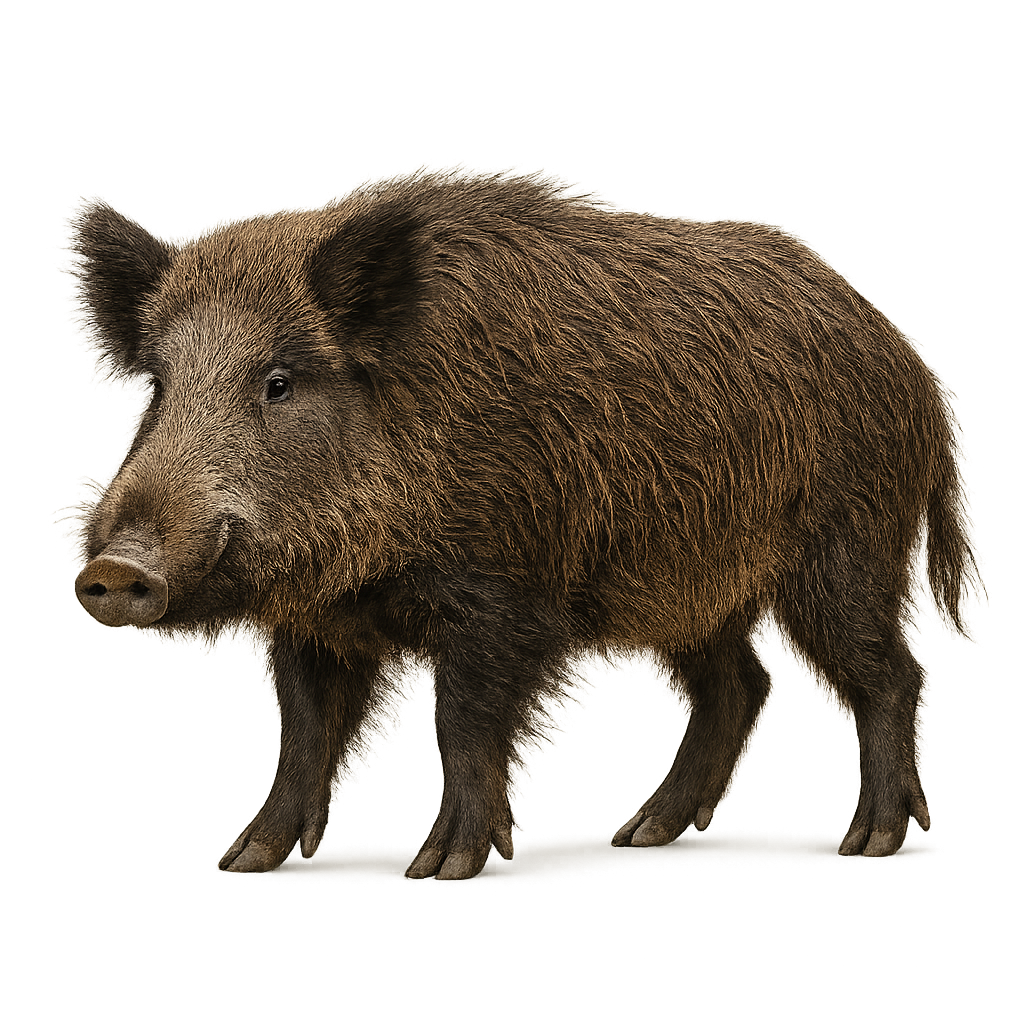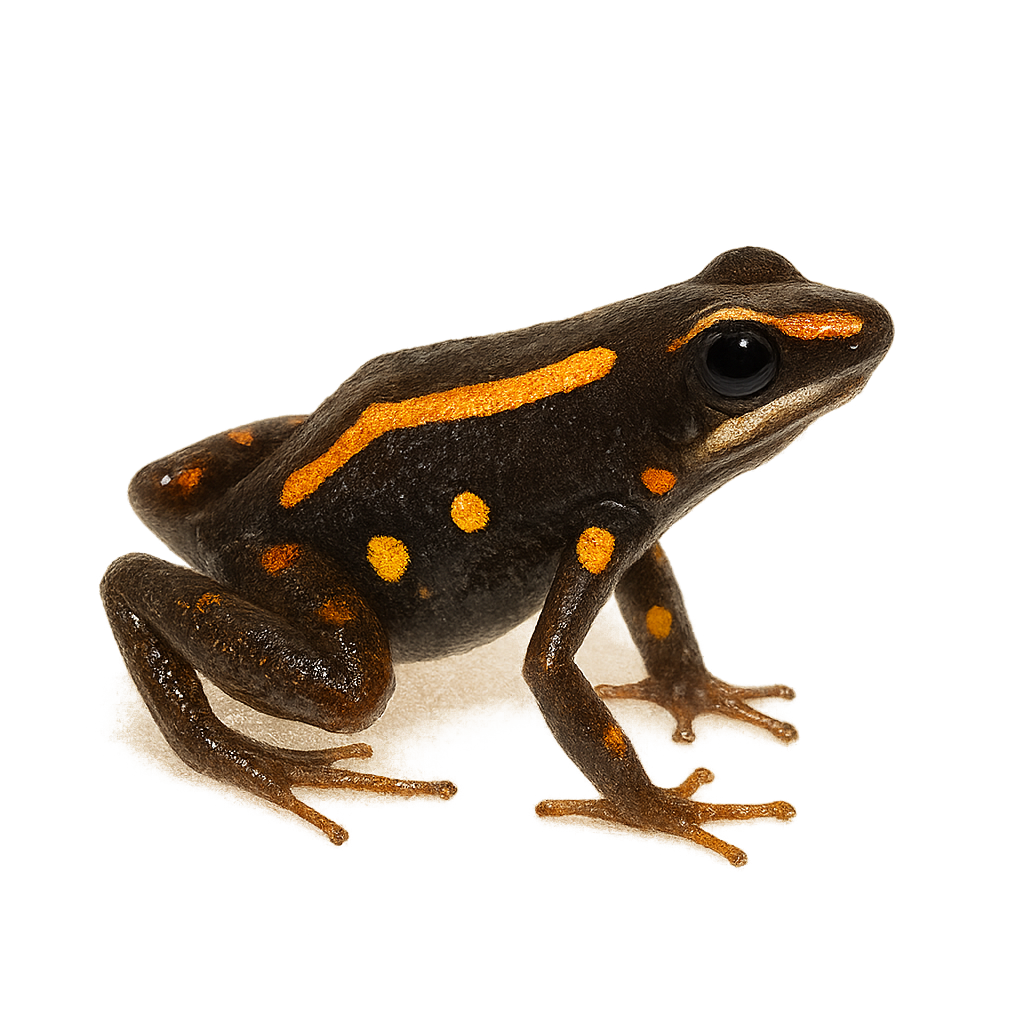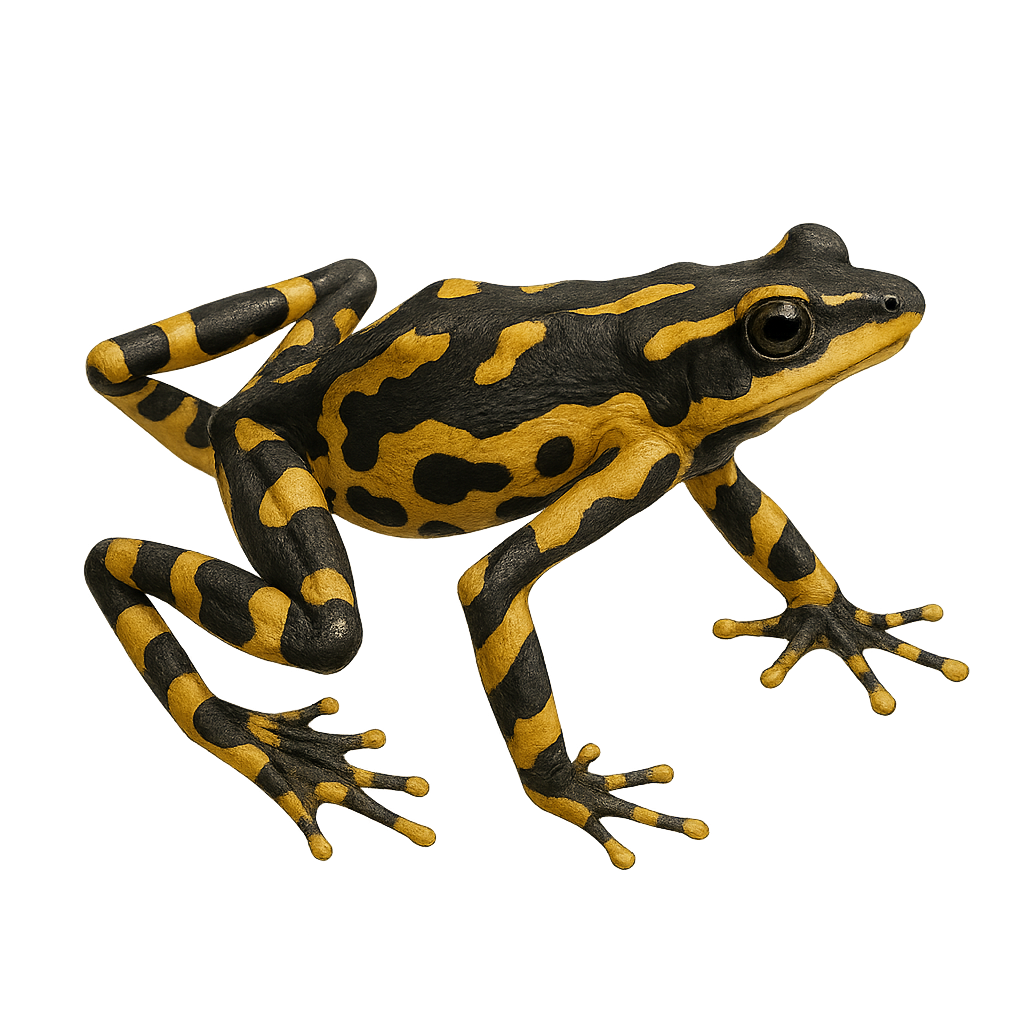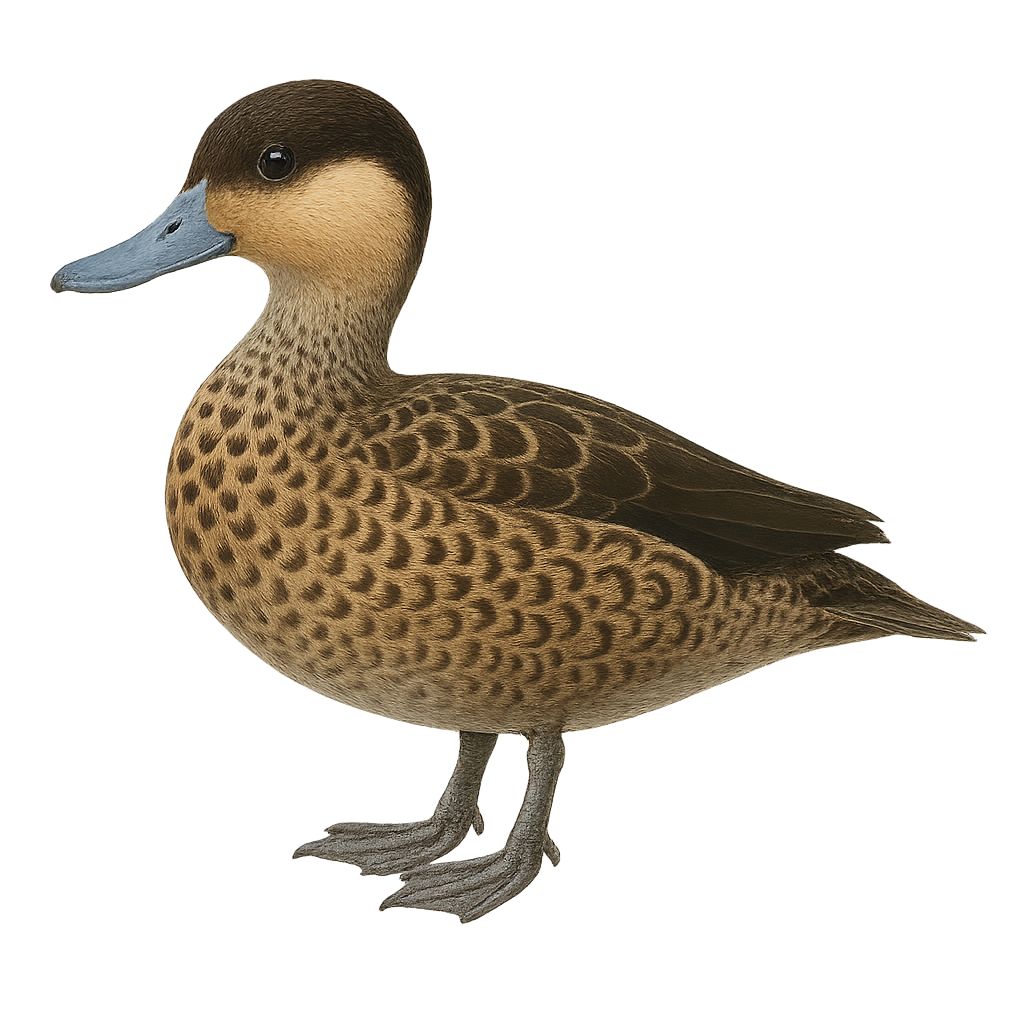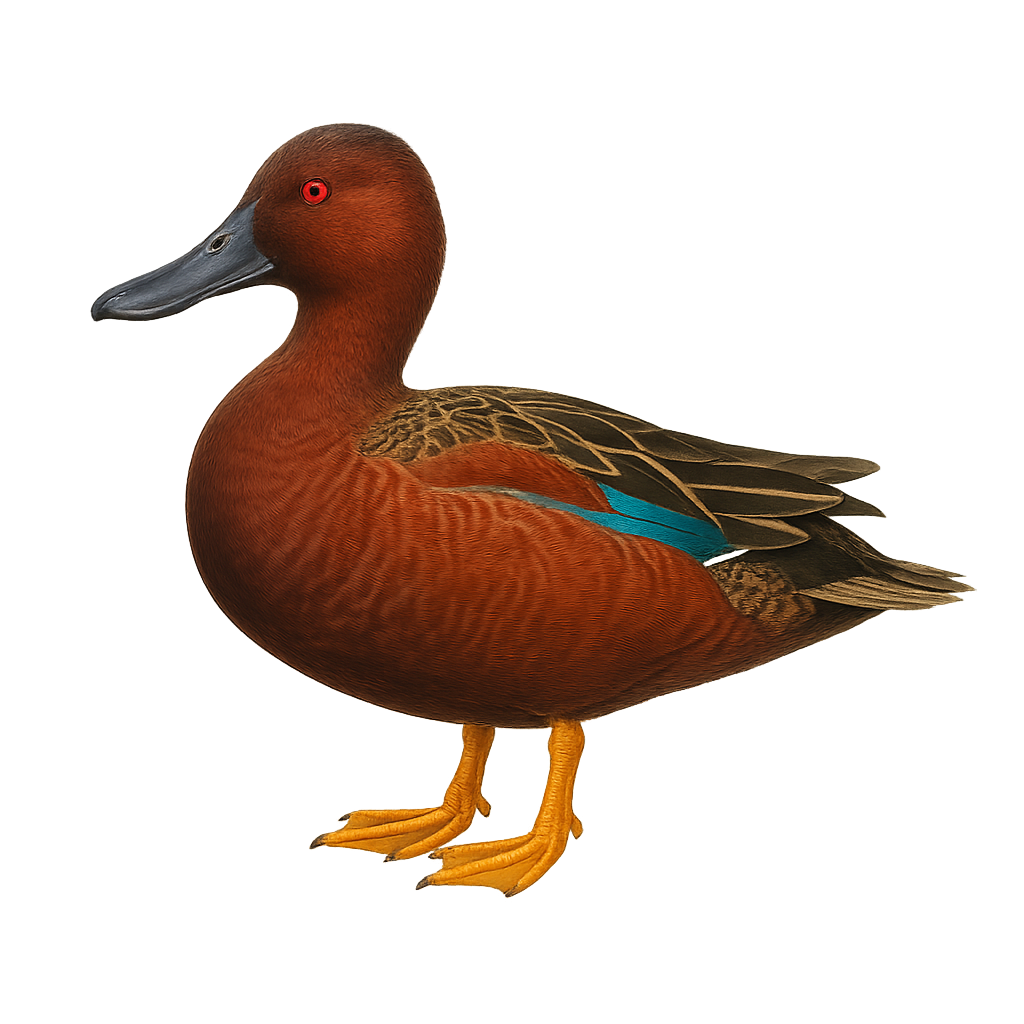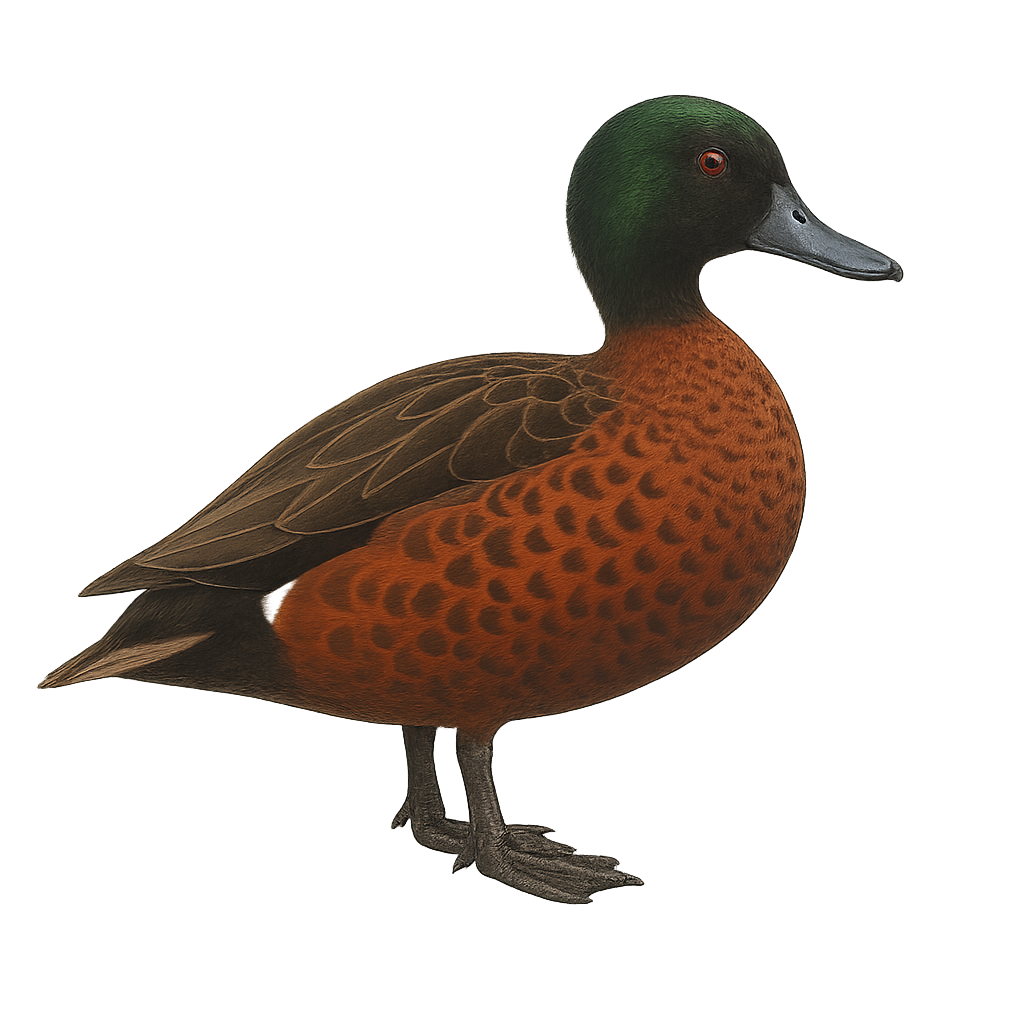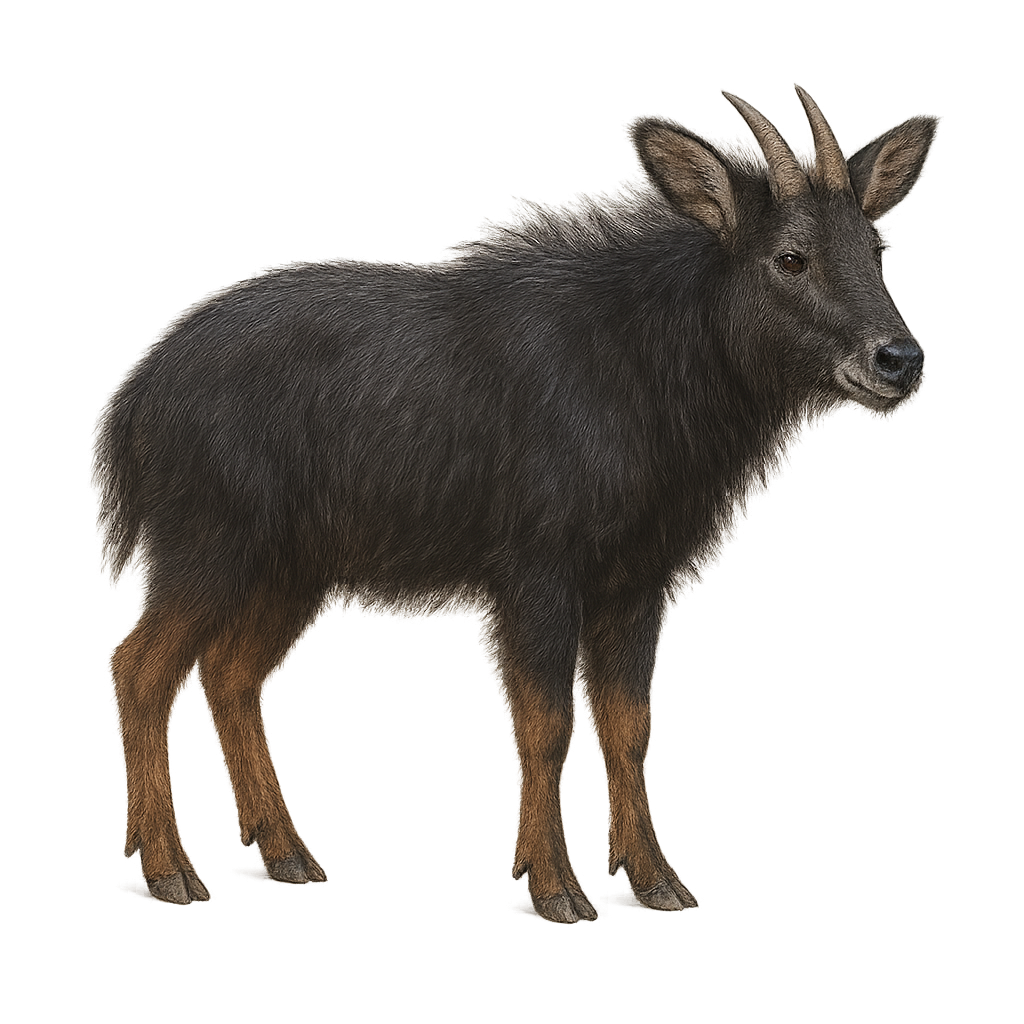The Chinese giant salamander, Andrias davidianus, is the largest amphibian in the world, reaching up to 1.8 meters in length. It primarily inhabits mountain rivers and lakes in China. Its skin is rough and dark brown, allowing it to blend into its aquatic surroundings. It is mainly nocturnal and feeds on fish, crustaceans, and insects. Unfortunately, this species is critically endangered due to habitat loss and water pollution. The Chinese giant salamander is also threatened by illegal hunting for its meat, considered a delicacy.
The Japanese giant salamander is one of the largest salamanders in the world, reaching lengths of up to 1.5 meters. It lives in cold rivers and mountain streams in Japan, primarily in the regions of Honshu and Shikoku. This nocturnal predator feeds mainly on fish, crustaceans, and aquatic insects. Due to its imposing appearance and secretive behavior, this salamander is often difficult to spot. It is protected due to habitat loss and river pollution.
The Coastal Giant Salamander, Dicamptodon tenebrosus, is a fascinating species of salamander primarily inhabiting the moist forests of the Pacific Northwest in North America. Known for its large size, it can grow up to 35 cm in length. Its skin is typically dark brown with lighter marbled patterns, allowing it to blend effectively into its natural surroundings. This salamander is mostly nocturnal, feeding on invertebrates, small fish, and occasionally small mammals. It plays a crucial role in the ecosystem by regulating insect populations and serving as prey for other animals. Although relatively tolerant of human disturbances, habitat destruction poses a threat to its survival.
The spotted salamander is an urodele amphibian, 15–25 cm long, with a jet-black back marked by bright yellow spots. It inhabits humid deciduous forests and migrates by night to ephemeral pools in early spring to breed.
The Ambystoma opacum, or marbled salamander, is a fascinating amphibian native to North America. It is distinguished by its modest size, typically between 9 and 11 cm, and its unique black and white coloration, giving it a marbled appearance. This salamander prefers humid habitats such as deciduous forests and marshy areas. It is nocturnal, meaning it is primarily active at night. The marbled salamander is oviparous, laying its eggs in moist depressions before the autumn rains. It is known for its ability to hide under leaves and debris to avoid predators. Although its conservation status is concerning, it is not currently endangered.
The Alpine salamander is a terrestrial amphibian of the Alpine arc, with a shiny black body and short limbs. It inhabits humid montane forests and alpine meadows above 700 m, feeding on insects and small invertebrates. During the breeding season, males and females meet on damp ground to mate, without returning to water.
The Spotted Salamander is an amphibian primarily found in forests and wetlands across Europe, particularly in France, Spain, and Germany. It typically measures between 15 and 25 cm in length, although some specimens can reach up to 30 cm. Its body is black with bright yellow spots, making it easily identifiable. The Spotted Salamander is a nocturnal and terrestrial animal, hiding during the day under rocks or in holes in the ground to protect itself from the heat. It is carnivorous and feeds primarily on insects, worms, small crustaceans, and other invertebrates. While it remains relatively abundant in certain regions, this species is threatened by water pollution, habitat destruction, and climate change.
The tiger salamander is a robust terrestrial amphibian of 15–25 cm (sans la queue), with an olive to brown body marked by yellow blotches and a pale throat. A nocturnal and crepuscular species inhabiting woodlands, damp meadows and pond margins, it feeds on insects, worms and molluscs. During breeding, males produce low underwater calls to attract females to egg-laying sites.
The California tiger salamander is a stout-bodied salamander 15–20 cm long, with a black dorsum marked by yellow or cream spots. Endemic to grasslands, agricultural lands and open woodlands of central and coastal California, it depends on fishless temporary ponds to breed, migrating nocturnally from upland burrows. Adults shelter in rodent burrows during dry periods.
The Seychelles Swiftlet, or Collocalia elaphra, is a small bird endemic to the Seychelles islands. This member of the Apodidae family is characterized by its brownish-grey plumage and its ability to fly swiftly and agilely. It primarily feeds on insects caught in flight. Seychelles Swiftlets often nest in caves or cliffs, using their saliva to build nests. Their population is relatively stable, though confined to their insular habitat. These birds are particularly active during the day, often flying in groups. Their behavior is generally suspicious, making observation challenging for amateur ornithologists.
The Black-headed Saltator is a medium-sized bird, measuring about 20 to 25 cm in length. It is easily recognizable by its black cap contrasting with its olive-green back and white belly. Its robust beak is well-suited for its diet, which mainly consists of fruits, seeds, and insects. It is primarily found in tropical and subtropical forests but can also inhabit wooded areas and gardens. This bird is known for its melodious and powerful song, often heard at dawn and dusk. It is usually seen alone or in pairs but can also join mixed-species flocks.
The Grayish Saltator is a medium-sized bird, measuring about 20 to 23 cm in length. It is easily recognizable by its grayish-blue plumage, with a lighter chest and slightly darker wings. Its beak is robust and adapted to its diet, which mainly consists of fruits, seeds, and insects. It is primarily found in tropical and subtropical forests, as well as open wooded areas in Central and South America. The Grayish Saltator is a social bird, often seen in small groups or pairs. It is known for its melodious song, which plays an important role in communication between individuals and territory defense.
The Streaked Saltator, scientifically known as Saltator albicollis, is a medium-sized bird belonging to the Thraupidae family. It is characterized by its olive-green back and white throat, which gives it its name. Its chest is gray with dark streaks, and it has a strong beak suited for its primarily seed-based diet. Found mainly in the tropical and subtropical forests of Central and South America, it is often seen in small groups. Although relatively discreet, its melodious song is easily recognizable. This bird plays an important role in seed dispersal, aiding in forest regeneration.
The Masked Saltator, or Saltator cinctus, is a medium-sized bird belonging to the Thraupidae family. It is primarily found in the humid forests and wooded areas of the Andes, where it is recognized by its olive-green plumage and lighter belly. Its head features a distinctive black mask that contrasts with its white throat. This bird is often seen in small groups or pairs, feeding on fruits, seeds, and insects. Although relatively discreet, its melodious and powerful song can be heard throughout the canopy. The Masked Saltator plays a crucial role in seed dispersal, aiding in forest regeneration.
The Green-winged Saltator is a medium-sized bird primarily found in the forests and wooded areas of South America. It is easily recognizable by its olive-green plumage and slightly darker wings. Its robust beak is adapted for cracking seeds, although it also feeds on fruits and insects. The song of the Green-winged Saltator is melodious, often heard at dawn. This bird is generally solitary or seen in small groups. It is quite suspicious of humans, which can make observing it a challenge. Its ability to adapt to different habitats allows it to thrive in various environments.
The Many-colored Chaco Finch is a captivating bird native to the dry and semi-arid regions of South America. It is easily recognizable by its vibrant and multicolored plumage, which gives it a unique appearance among passerines. This bird measures about 18 cm in length and features a combination of colors ranging from bright yellow to deep black, with touches of white and gray. It is often seen in small groups, feeding primarily on seeds and insects. The Many-colored Chaco Finch is a resilient bird, capable of adapting to various habitats, although it prefers bushy areas and open savannas. Its ability to blend into its environment while displaying striking plumage makes it a favorite subject for ornithologists and wildlife photographers.
The sambar, or Cervus unicolor, is a large deer native to South and Southeast Asia. It is recognizable by its dark brown coat and impressive antlers in males. Sambars primarily inhabit dense forests, grasslands, and swamps, feeding on leaves, fruits, and bark. They are generally solitary or live in small family groups. The sambar is a crepuscular animal, active mainly at dawn and dusk. Although hunted for its meat and antlers, it remains relatively widespread in its natural habitat. However, deforestation and overhunting threaten some local populations.
The Wild Boar is a large omnivorous mammal found primarily in forests, wooded areas, and mountains of Europe, Asia, and North Africa. It measures between 1.2 and 1.8 meters in length, with a tail of 15 to 25 cm, and weighs between 50 and 100 kg, though some specimens can reach up to 200 kg. Its fur is typically brown, with darker hair on the back and lighter on the sides. The Wild Boar is a nocturnal animal, primarily feeding on roots, fruits, seeds, insects, and small animals. While it is considered game, it can sometimes pose a threat to agricultural crops due to its tendency to root through the soil. This species is widely distributed, and its population remains relatively stable, although it is sometimes threatened by excessive hunting and habitat loss.
The Sus scrofa moupinensis, commonly known as the Tibetan wild boar, is a subspecies of wild boar found primarily in the mountainous regions of Central Asia. It is distinguished by its robustness and ability to adapt to various environments, ranging from dense forests to alpine meadows. Its coat is generally thicker and darker than that of other subspecies, allowing it to better withstand cold temperatures. Males have prominent tusks, which they use for defense and for digging in the ground in search of food. As an omnivore, its diet is varied and includes roots, tubers, fruits, and small animals.
The Santander poison frog is a small, brightly colored frog endemic to the humid tropical forests of Colombia. It is distinguished by its shiny skin, often a striking blue with black patterns, making it a fascinating specimen for herpetologists and nature enthusiasts. This species is known for its territorial behavior and its ability to produce powerful toxins, used as a defense mechanism against predators. It primarily inhabits dense, humid undergrowth, where it feeds on insects and other small invertebrates. Its survival is threatened by deforestation and the loss of its natural habitat, making it vulnerable according to IUCN criteria.
Excidobates captivus is a species of poison dart frog endemic to the humid rainforests of Peru. This small amphibian, measuring about 2 to 3 cm, is known for its bright coloration, typically a mix of yellow, black, and sometimes blue, which warns predators of its toxicity. Its skin secretes potent alkaloids, used by local populations to poison arrows. It primarily inhabits dense undergrowth, feeding on small insects and invertebrates. Reproduction usually occurs during the rainy season when conditions are ideal for tadpole development. Although its population is stable, deforestation and collection for the pet trade threaten its natural habitat.
Saola
Pseudoryx nghetinhensis
The Saola, also known as the 'Asian unicorn,' is one of the rarest and most mysterious mammals on the planet, first discovered in 1992 in the mountains of Vietnam and Laos. This critically endangered cervid has spiral horns and a stealthy gait. It lives in tropical mountain forests and primarily feeds on vegetation. Due to its elusive nature and inaccessible habitat, it is very difficult to observe. It is threatened by deforestation and poaching.
The Atelopus varius, commonly known as the variable harlequin toad, is a brightly colored toad species native to the tropical rainforests of Central America, primarily in Costa Rica and Panama. This toad is renowned for its vivid colors and distinctive patterns, which vary significantly from one individual to another. Colors can range from bright yellow to green, with contrasting black spots. Unfortunately, this species is critically endangered, mainly due to habitat loss, fungal diseases, and climate change. Conservation efforts are underway to protect this unique amphibian and its natural habitat.
The Hottentot Teal, or Spatula hottentota, is a small dabbling duck found mainly in sub-Saharan Africa. It is characterized by its light brown plumage, wings with greenish sheen, and blue-grey bill. Males and females are similar, although males often have slightly brighter colors. This duck prefers wetlands, such as marshes, lakes, and rivers with dense vegetation. It is primarily herbivorous, feeding on seeds, aquatic plants, and insects. Although generally discreet, it can be seen in small groups, especially during the breeding season. Its call is a soft whistle, often heard at dusk.
The Cinnamon Teal, or Spatula cyanoptera, is a small dabbling duck found primarily in North and South America. It is recognizable by its reddish-brown plumage in males, while females display more subdued shades of brown and gray. This species prefers wetland areas such as marshes and ponds where it feeds mainly on aquatic plants, seeds, and insects. The Cinnamon Teal is a migratory species, moving south during the winter months. It is often seen in small groups and is known for its fast and direct flight.
Anas crecca is the smallest dabbling duck in Eurasia, measuring between 33 and 38 cm in length with a wingspan of 53 to 58 cm. The male in breeding plumage is distinguished by a chestnut head with an iridescent green band from the eye to the nape, a white collar, and a body finely vermiculated grey. The female is brown speckled, with a light line at the eye and a light spot on the rump. It frequents shallow wetlands such as marshes, ponds, rice fields, and mudflats, often with dense aquatic vegetation. It primarily feeds on seeds of aquatic plants, algae, small invertebrates, and insect larvae. Reproduction occurs between May and July, with the female building a well-hidden nest in vegetation, where she lays 8 to 11 eggs. Incubation lasts about 21 to 23 days. A migratory species, it winters in Europe, Asia, and North Africa.
The Garganey is a small dabbling duck measuring between 37 and 41 cm in length with a wingspan of 59 to 67 cm. The breeding male is characterized by a broad white crescent over a reddish-brown head, finely vermiculated gray flanks, and gray-blue scapulars. The female has a cryptic brown-beige plumage with three longitudinal facial stripes. This species inhabits marshes, ponds, and floodplain meadows rich in aquatic vegetation, generally avoiding brackish waters. It feeds mainly on seeds, aquatic plants, mollusks, insects, and small crustaceans. Strictly migratory, it breeds in Europe and western Asia, wintering in sub-Saharan Africa, India, and Southeast Asia. Although listed as Least Concern by the IUCN, it is locally vulnerable due to the loss of wetland habitats.
The Chestnut Teal, Anas castanea, is a dabbling duck species native to Australia. This duck exhibits marked sexual dimorphism: the male has a metallic green head and chestnut breast, while the female is duller with brown and grey hues. They primarily inhabit wetlands, estuaries, and coastal marshes. Their diet consists of aquatic plants, insects, and small invertebrates. They are often seen in small groups and are known for their relatively tolerant behavior towards humans. The breeding season varies by region but generally occurs in spring and summer.
The Mainland Serow, Capricornis milneedwardsii, is a robust caprine found in the mountainous forests of Southeast Asia. It is characterized by its thick, dark coat, often black or dark brown, and its short, slightly curved horns. Adapted to rugged terrains, it is an excellent climber. Serows are generally solitary or live in small family groups. Their diet mainly consists of leaves, shoots, and grasses. Although elusive, the serow plays a crucial role in its ecosystem by aiding in seed dispersal. Unfortunately, it is threatened by hunting and habitat loss.
The Boat-billed Heron, or Cochlearius cochlearius, is a fascinating bird from the Ardeidae family. It is distinguished by its broad, spoon-shaped bill, ideal for capturing aquatic prey. This nocturnal heron primarily inhabits mangroves, swamps, and tropical rainforests in Central and South America. Its plumage is mainly gray with a black head adorned with a distinctive white crest. It measures about 50 cm in length with a wingspan of 76 to 86 cm. The Boat-billed Heron is a discreet bird, often difficult to observe due to its nocturnal habits. It feeds mainly on fish, crustaceans, and aquatic insects.




